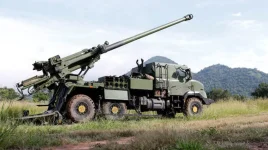
The Indian Army is embracing a new era of technological advancement by replacing its long-serving pack mules with AI-powered robotic counterparts. This transition, showcased at the recent Army Day Parade in Pune, highlights the military's commitment to modernization, particularly in logistical operations across challenging terrains like the Himalayas.
For almost two centuries, mules have played a crucial role in supporting the Indian military, providing logistical aid in some of the world's most demanding environments. From the battlefields of major global conflicts to the dense jungles of Burma, these animals have been essential in delivering supplies where human efforts alone would struggle. The current 4,000-strong mule corps underscores their vital contribution to military logistics.
However, the introduction of robotic Multi-Utility Legged Equipment (MULE) robots signifies the inevitable integration of technology into all aspects of warfare. These 51 kg robots, with their matte black finish, are designed to not only replicate but also surpass the capabilities of their animal predecessors. Equipped with advanced navigation systems, they can traverse treacherous terrains carrying rations, fuel, medicine, ammunition, and other vital supplies to troops stationed in remote and high-altitude locations.
This technological shift is not without its sentimental impact. Many army veterans, who have worked alongside these animals in high-altitude regions, express a sense of nostalgia for the days of mule trains. They fondly recall the mules' unwavering service, sharing stories of how these animals often meant the difference between life and death in combat situations. The mules' resilience, sure-footedness, and determination on perilous mountain paths have left a lasting impression on those who served with them.
These veterans' sentiments reflect a broader narrative about the evolving nature of warfare and military life. While the robotic MULEs offer increased efficiency, reduced risk to human life, and potentially even a new form of companionship, they also mark the end of an era. The bond between soldier and mule, forged through mutual reliance and shared hardships, represents a chapter in military history that these veterans feel is coming to a close.
The transition to robotic mules also raises questions about the loss of the unique character and tradition that animals brought to the military. There is an undeniable appeal to the stories of valor and survival involving mules, which, despite their lack of human intelligence, demonstrated a form of bravery and loyalty that resonated deeply with soldiers.
This shift in the Indian Army's logistical approach reflects a global trend. Modern militaries worldwide are increasingly incorporating autonomous systems and robotics to enhance operational efficiency and reduce human risk. As technology continues to evolve, the role of animals in warfare is likely to further diminish, marking a significant change in the landscape of military operations.


